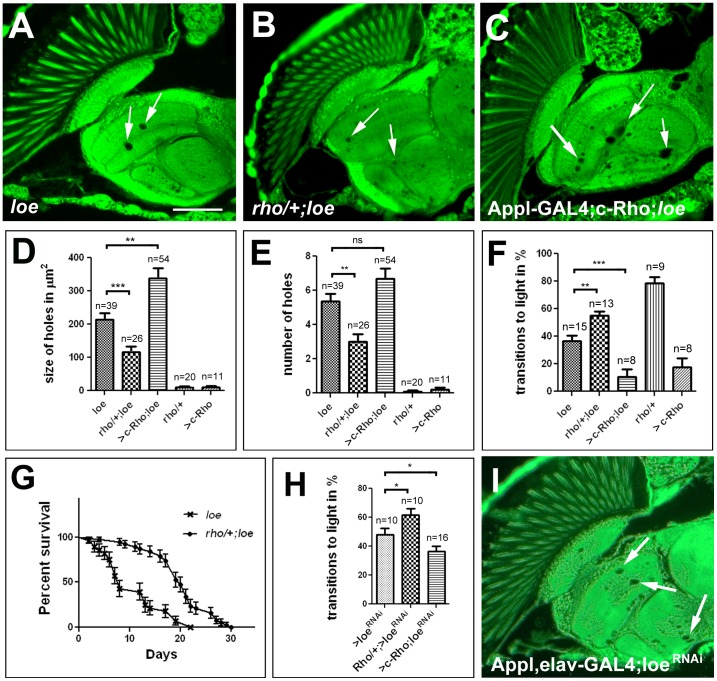Figure 3. loe interacts with Rho1.
A. A section from a loe control fly shows more vacuolization (arrows) than a Rho72F/+; loe/loe fly (B). C. In contrast, a fly expressing constitutive active Rho1 in the nervous system using Appl-GAL4 exhibits more spongiform lesions than the loe control (A). D, E. Quantification of the vacuolization reveals a significant reduction in the size (D) and number (E) of vacuoles in Rho72F/+; loe/loe flies compared to controls obtained from the same cross whereas flies expressing constitutive active RhoV14 show an enhancement. Rho72F/+ flies or Appl-GAL4>Rho1V14 flies alone do not show a degenerative phenotype. n = analyzed brain hemispheres. F. Similarly, Rho72F/+; loe/loe flies performed better in the fast phototaxis assay than loe alone whereas expressing Rho1V14 via Appl-GAL4 reduced their performance. n = number of independent experiments with groups of 5–10 flies (groups of 3–6 were tested when Rho1V14 was expressed because only few of these flies survived). A–F All flies were 5 d old females. G. Heterozygosity for Rho72F also significantly increased the lifespan in loe females (p<0.001). H. Inducing a loeRNAi construct with elav-GAL4 also resulted in deficits in the phototaxis assay that are partially suppressed when combined with Rho72F/+ and enhanced when Rho1V14 is co-expressed. n = number of groups of 5–10 females 14 d old. I. A 14 d old male fly in which the loeRNAi construct was induced with elav-GAL4 and Appl-GAL4 shows vacuole formation (arrows) similar to loe mutant flies. SEMs are indicated in all the graphs. * p<0.05, ** p<0.01, *** p<0.001. Scale bar in A = 50 µm.

